Hawa Mahal: The Iconic Jewel in Jaipur's Royal Crown
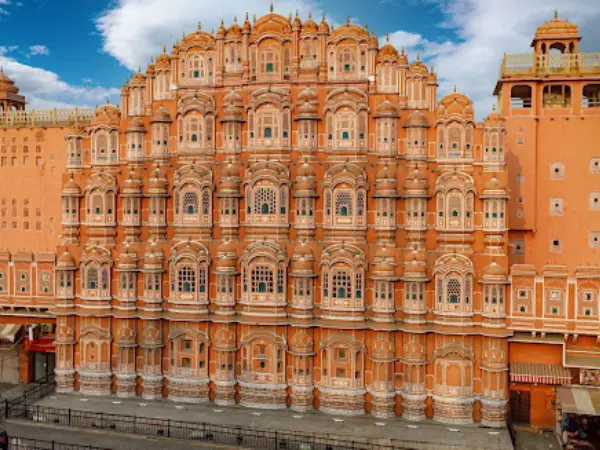
The Hawa Mahal, or Palace of Winds, is perhaps the most recognizable monument of the historical ‘Pink’ city of Jaipur, Rajasthan. With its unusual design and marvelously intricate architecture, this ’palace’ -which is in fact not a residential palace but a wall or facade – symbolizes the artistic ambitions of Jaipur’s kings and the lifestyle of their queens.
Standing in the heart of the city with the busy marketplace swirling around it, the Hawa Mahal was built in 1799, commissioned by Maharaja Sawai Pratap Singh, the grandson of Maharaja Sawai Jai Singh (the founder of Jaipur) and designed and executed by the architect Lal Chand Ustad. The motivation for building the structure was for the royal women to be able to witness the daily street life of the city, as well as the periodic royal processions and social festivals of commoners, without being seen by the public, since social norms required them to observe purdah (seclusion from the male gaze). The high walls and the multiple cleverly concealed and highly decorated window openings not only allowed for airflow to keep the palace cool during the intense Rajasthan summers, but also served as an exclusive female space for the royal women to watch the world go by while remaining invisible from the street.
Where is Hawa Mahal Located?
The Hawa Mahal is located in the midst of the Pink city bazaar, next to the Badi Choupad, one of the two public circles – Badi Choupad and Choti Choupad – originally designed for the citizens of Jaipur to congregate in the evenings to take in the air, but which today serve as traffic islands. It is within walking distance of the other most important heritage sites of the city – the City Palace, Jantar Mantar ( Royal Astronomical Observatory), the scores of colourful temples erected by the old business elites and, of course, the buzzing bazaars.
Hawa Mahal Address:
- Location: Badi Choupad, Pink City, Jaipur, Rajasthan, 302002, India. Click here for Hawa Mahal Google Map Location.
How to Reach Hawa Mahal from Major Locations
Here is information on how to get there from various parts of the city:
- Closest Metro Station to Hawa Mahal:
The closest metro station is Badi Chaupad Metro Station, which is around 200 meters from the Hawa Mahal. It can be quickly accessed by taxi, rickshaw or on foot.
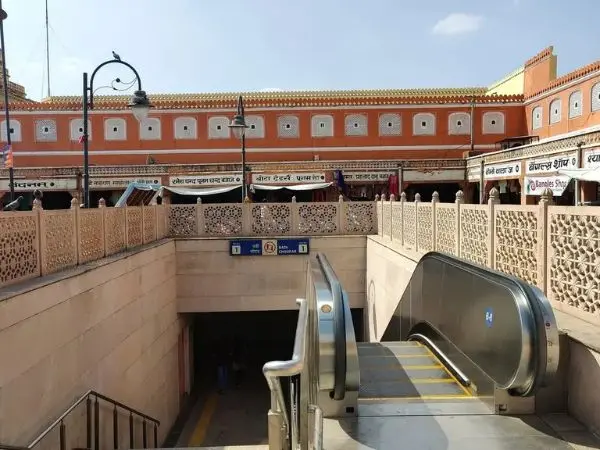
Q. Hawa mahal nearest railway station
Ans: The nearest metro station is Badi Chaupar.
- Jaipur Railway Junction to Hawa Mahal Distance:
The Hawa Mahal is located approximately 6 km away from Jaipur Railway Junction (the main railway station). Getting there by car or auto-rickshaw from takes about 10 – 15 minutes of travel time. To check real-time traffic and distance, click here to check on Google Maps.
Q. Jaipur railway station to hawa mahal distance
Ans: 4.1 km Jaipur railway station to hawa mahal distance
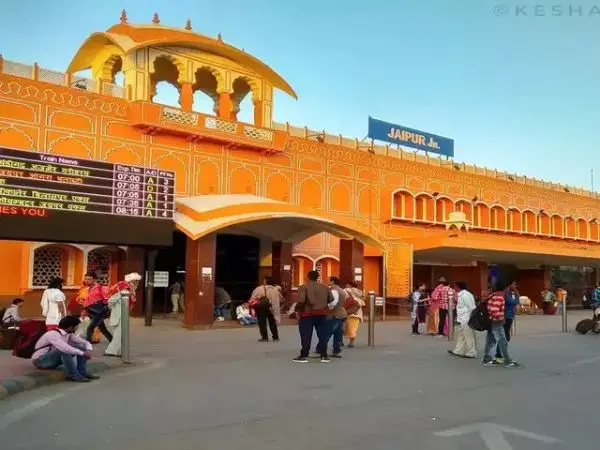
- Jaipur Bus Stand to Hawa Mahal Distance:
The Hawa Mahal is approximately 3 km from the Jaipur Bus Stand (Sindhi Camp Bus Stand). It takes about 10 minutes travel by car. Alternatively, rickshaws are available that can get you there even quicker. To check real-time traffic and distance, click here to check on Google Maps.
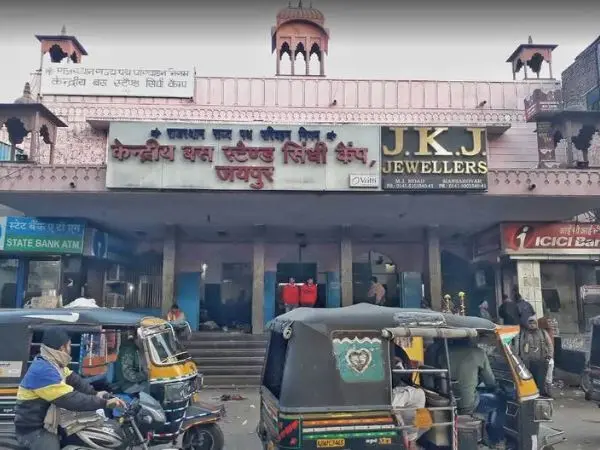
- Hawa Mahal to Jantar Mantar & City Palace, Jaipur:
The Jantar Mantar and the City Palace, two other tourist attractions, are located only about 400 meters from the Hawa Mahal and within minutes of each other by walk. All three sites can be easily combined on the same day. See the Google Map.
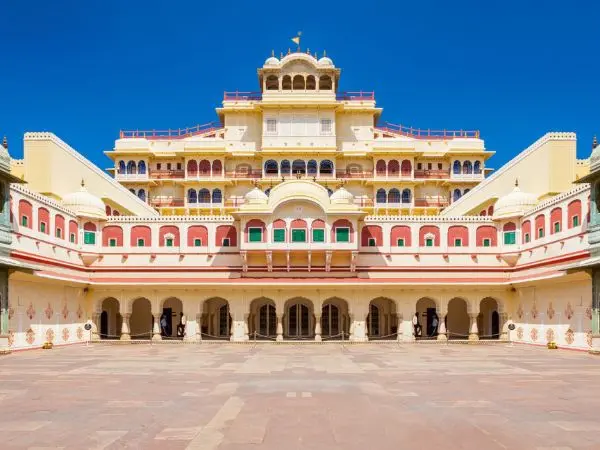
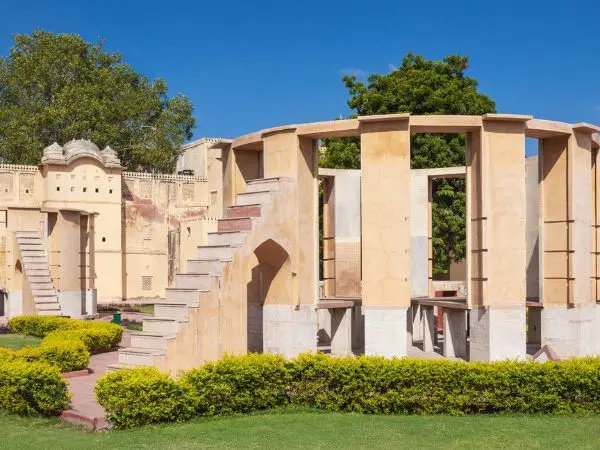
Architectural Design
The palace was created using red and pink sandstone, a prominent feature of the medieval city of Jaipur. It combines Rajput and Islamic architectural styles, and the façade is fashioned as a crown or lotus flower, which has deep meaning cultural symbolism in the region. The façade is made up of 953 highly ornamented little windows (called jharokhas); this extravagant feature is what provides the airflow through the building.
While the exterior is certainly its most impressive aspect, the rear portion of the ‘palace’ is just as interesting, featuring open air galleries and courtyards with narrow passages running through them and connecting the whole structure into a coherent whole. The second floor is the level that is open to the public as it allows for panoramic views of the surrounding streets and the Jantar Mantar.
Visiting Hawa Mahal: Essential Information
Here are some important details to help you maximize your time at the Hawa Mahal:
- Hawa Mahal Jaipur Timings:
The monument is open every day from 9 AM to 5 PM.
- Hawa Mahal Entrance Fee:
The entrance fees are: - ₹50 per head for Indian nationals;
- ₹200 per head for foreign nationals.
- Concessional rate of students on production of valid ID cards
Q. Hawa mahal entry fee
Ans: The entry of Hawa Mahal is
Indians Adults: ₹ 50/-
Indians Students: ₹ 20/-
Foreign Tourists: ₹ 200/-
Foreign Students: ₹ 100/-
- Tickets can be purchased on-site, or online ahead of time to avoid waiting in long queues. To book online click here https://obms-tourist.rajasthan.gov.in/
Q. What is the best time to visit Hawa Mahal?
Ans: The best time to visit Hawa Mahal is during the cooler months from October to March
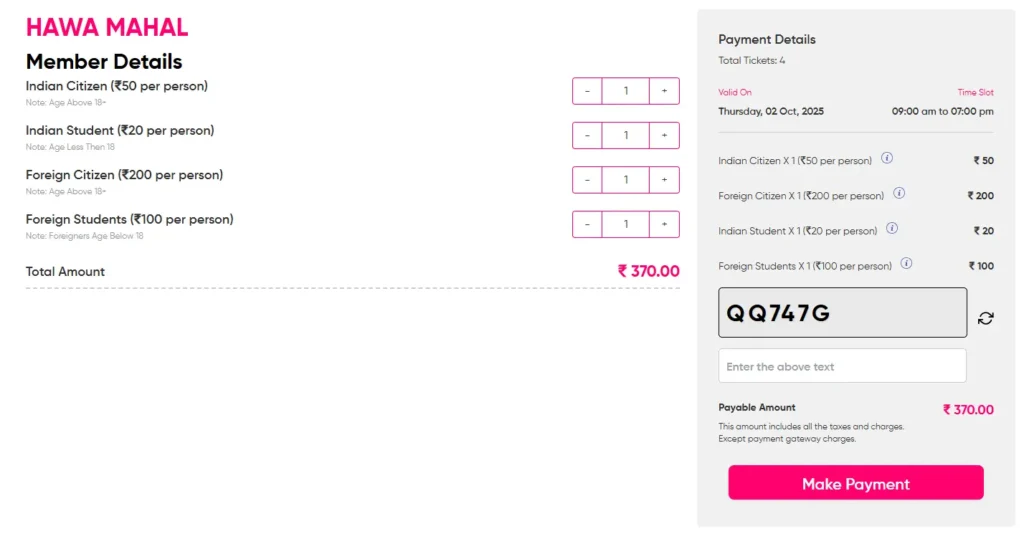
Free Entry for:
- Children below 7 years
- Disabled Persons
- For student groups everyday from 10.00 AM to 05.00 PM on recommendation of their respective Institutions.
Free Entry days for all:
- 30th March – Rajasthan Diwas (Rajasthan Day)
- 18th April – World Heritage Day
- 18th May – World Museum Day
- 27th September – World Tourism Day
Entry is open to all the galleries, courtyards and inner rooms of the palace.
Film Shooting
- Foreign Company: INR 1 lakh /day
- Indian Company: INR 1 lakh/day
- Rajasthani Film: INR 50,000/day
Video Film
- Foreign Company: INR 20,000/day
- Indian Company: INR 20,000/day
- Rajasthani Film: INR 10,000/day
Still Photography
- Foreign Company: INR 5,000/day
- Indian Company: INR 5,000/day
Nearby Attractions and Markets
- Markets
The Johari Bazaar, known for its traditional jewelry; Shops selling local handicrafts, textiles, and carpets. Great for souvenir shopping.
- Hawa Mahal Night View
It is a gorgeous sight at night when Hawa Mahal is lit up. The contrast of the illuminated Hawa Mahal and the evening sky makes for a picturesque view that is perfect for photo enthusiasts. Although you cannot visit the palace inside at night, the outer view is a scene to behold.

